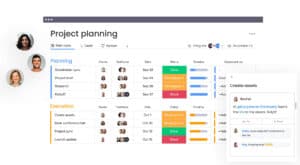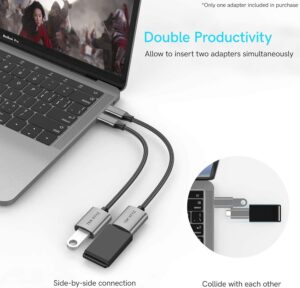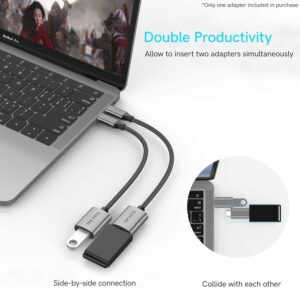Boost Sales with Effective Email Tracking: A Comprehensive Guide
Email tracking is an essential tool for modern sales teams. It provides insight into how your prospects interact with your emails—whether they open, click, or forward them. This data can help you refine your sales strategy, improve engagement, and close deals more efficiently. In this guide, we’ll dive deep into email tracking, explore its importance, and share actionable steps to optimize your sales process using this powerful tool.
Email tracking enables sales teams to understand prospect behavior, such as when and how many times an email has been opened, links clicked, or if attachments have been viewed. These insights offer valuable information that can significantly enhance the effectiveness of your follow-up strategies.
Why Email Tracking is Critical for Sales Success
Without email tracking, you’re essentially operating in the dark. Did your lead open your email? Did they click the link to your product demo? With email tracking tools, you gain transparency into the customer’s journey and can act accordingly.
Key Benefits of Email Tracking:
- Improved Timing: Knowing when a lead opens an email can give you a window to follow up when the prospect is most engaged.
- Refined Strategies: Tracking which emails or subject lines perform best allows for more targeted and effective email campaigns.
- Personalized Follow-ups: Tailor your follow-ups based on the behavior of your recipients to close deals faster.
- Increased Conversion Rates: With real-time data on email engagement, you can optimize your approach and improve your chance of converting leads into customers.
How Email Tracking Works
Most email tracking software uses invisible pixels embedded in emails. When a recipient opens the email, the pixel loads, notifying the software of the email’s open status. Similarly, when a recipient clicks on a link, the tracking software records this action, giving you full visibility into how the prospect interacts with your message.
Commonly Tracked Metrics:
- Email Open Rate: The percentage of recipients who opened your email.
- Click-Through Rate (CTR): The percentage of recipients who clicked on links within your email.
- Response Rate: The percentage of recipients who responded to your email.
- Time Spent: How long recipients spend reading your emails or engaging with content.
These metrics provide you with crucial insights that allow you to tailor your outreach efforts.
Key Strategies for Effective Email Tracking in Sales
1. Optimize Your Subject Lines
Subject lines can make or break an email campaign. Emails with catchy and relevant subject lines tend to have higher open rates. A/B test different subject lines using email tracking to find out which versions work best for your audience. For example:
- Test subject lines with and without personalization.
- Experiment with different lengths and formats.
- Use urgency or exclusivity to encourage quicker opens.
2. Track Engagement to Personalize Follow-ups
Not all prospects will respond to your first email, but that doesn’t mean you should give up. By using email tracking tools, you can see who opened your email multiple times or clicked on a link. These are leads who are more likely to engage, so prioritize your follow-up efforts accordingly.
Examples of personalized follow-ups:
- For recipients who opened but didn’t click: Send a follow-up offering more information.
- For those who clicked a link: Suggest a demo or meeting to discuss your product.
- For unopened emails: Try sending a follow-up with a new subject line or at a different time.
3. Analyze the Best Time to Send Emails
Timing can have a big impact on open rates. Use email tracking to determine when your recipients are most likely to open emails. Some tools provide insights into the best time of day or week to send emails based on historical data, so you can time your communications to optimize engagement.
4. Leverage Automation
Email tracking can be combined with automation tools to streamline your outreach. Set up email sequences that adjust based on recipient behavior. For example:
- If a lead opens an email but doesn’t click, an automated follow-up can be triggered.
- If a lead clicks a specific link, a more targeted email with relevant content or an offer can follow.
5. Refine Your Sales Pitch Based on Engagement
The way a lead interacts with your emails can tell you a lot about their level of interest. Use email tracking to identify leads that are more engaged, and tailor your pitch to fit their needs. This could mean offering a product demo to someone who has clicked multiple links or addressing specific pain points for those who have spent time reading your content.
Top Email Tracking Tools for Sales Teams
1. HubSpot
HubSpot offers a comprehensive email tracking feature within its CRM platform, allowing sales reps to track email opens, link clicks, and downloads. The tool also integrates with Gmail and Outlook, making it accessible for everyday use.
2. Salesforce
Salesforce provides powerful email tracking through its Sales Cloud. This tool not only tracks opens and clicks but also integrates with Salesforce CRM to provide full visibility into your sales pipeline, ensuring that your team never misses an opportunity.
3. Pipedrive
Pipedrive’s email tracking allows sales reps to see who has opened emails and when. It also features an intuitive email integration system that keeps all communication with leads in one place, improving organization and follow-up efficiency.
4. Yesware
Yesware is a popular email tracking tool for sales teams that integrates with Gmail and Outlook. It provides real-time notifications for email opens, clicks, and replies, as well as analytics for measuring campaign performance.
5. Mailchimp
While primarily known as an email marketing tool, Mailchimp also offers tracking features that include open rates, click-through rates, and geographic tracking to help sales teams refine their outreach strategies.
6. ActiveCampaign
ActiveCampaign goes beyond email tracking by offering marketing automation, CRM integration, and sales engagement tools that are particularly useful for personalized outreach efforts and lead nurturing.
Conclusion: Elevate Your Sales Game with Email Tracking
Email tracking isn’t just a nice-to-have—it’s a must for any sales team looking to optimize performance, increase conversions, and close deals faster. By leveraging data on how prospects engage with your emails, you can make informed decisions about when and how to follow up, ultimately improving your sales process and results.
With tools like HubSpot, Salesforce, and Yesware, incorporating email tracking into your sales strategy is both accessible and effective. Don’t let leads fall through the cracks—take control of your sales pipeline with precise, real-time email tracking.
FAQs
What is email tracking?
Email tracking allows you to monitor when and how recipients engage with your emails. It tracks actions such as opens, clicks, and link engagements, helping you better understand your leads.
How does email tracking help in sales?
Email tracking gives sales teams insight into how leads interact with their outreach efforts, allowing them to follow up at the right time and with the right message, ultimately improving conversion rates.
Can email tracking be automated?
Yes, email tracking can be automated using CRM and sales automation tools, enabling real-time notifications for engagement and triggering automated follow-up actions based on recipient behavior.
Which email tracking tools are best for small businesses?
Tools like HubSpot, Yesware, and Pipedrive are excellent choices for small businesses looking for easy-to-use and affordable email tracking solutions.
Is email tracking legal?
Yes, email tracking is legal as long as you comply with data protection laws such as GDPR. It’s important to ensure that recipients are aware of data tracking practices, typically by including this information in your privacy policy.
Top Tools to Simplify and Scale Your Sales Process
- HubSpot: HubSpot’s email tracking within its CRM platform helps sales teams stay on top of email interactions, offering real-time insights and analytics to improve follow-up strategies.
- Salesforce: Salesforce’s Sales Cloud provides robust email tracking features along with CRM integration, helping sales teams track leads and manage communications more efficiently.
- Yesware: A Gmail and Outlook plugin, Yesware provides real-time notifications when emails are opened or links are clicked, allowing for timely follow-ups.
- Pipedrive: Pipedrive offers an intuitive email tracking feature that allows teams to monitor opens and clicks, streamlining sales follow-up efforts.
- Mailchimp: While primarily a marketing tool, Mailchimp also offers tracking capabilities that are valuable for sales teams focused on outreach and follow-up.
Keywords: email tracking, sales automation, lead follow-ups, personalized sales, CRM integration, sales tools, email engagement, lead conversion









